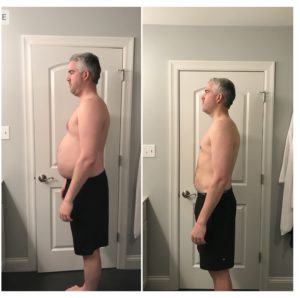
25 Oct Why Metabolic Conditioning Is Better Than Cardio
Cardiovascular training is one of the oldest forms of exercise but has evolved considerably over the last few decades. For most people today, they choose this style of exercise because they know that it’s simple and requires no equipment to get started.
However, what most people want is to tone up or lean out, which means they want to lose body fat or maintain a fit body.
To get there and stay there, they need to improve their nutrition and train smart 3-5 days per week.
Not all exercise is created equal, and that is especially true for different types of cardio.
At Faster Fitness, we’ve found much more success with focusing on Metabolic Conditioning over traditional cardio for helping people reach these goals.
Let’s start by talking about the difference between the two:
Typical Cardiovascular (Cardio) Training

Example: Steady state training such as running for 3 miles or 30 minutes.
Pros:
- Convenient to perform anywhere
- Simple to start
- Great for improving our general endurance
Cons:
- Likely to lead to orthopedic issues over time
- Our body adapts to cardio training quickly, making us more efficient at burning calories and reducing the benefits of our workouts
- Leads to increased cortisol, which decreases muscle mass, resulting in a physique that appears to be “less fit” or “skinny fat”
Metabolic Conditioning (MetCon)

Example: 5 Minute Burpee Challenge or a 12 Rounds Circuit of 30 Seconds working and 15-second breaks between burpees with a jump, kettlebell swings, and tuck jumps.
Pros:
- Significantly more efficient than steady state cardio. In 4 minutes you can have to total fat burning effect comparable to a 60-minute running workout when you include the post exercise caloric burn (EPOC)
- Able to implement other exercises that improve other fitness qualities. Such as…
- Strength exercises like reverse lunges
- Plyometrics for improved athleticism
- Able to prevent injuries better by swapping contraindicated exercises for ones that are safe for each person.
- With smart programming, you can attack the 3 major cardiovascular systems (Anaerobic a-lactic, anaerobic lactic and aerobic) with different MetCons and cycle them so you never hit a plateau. This also leads to having a well-rounded fitness level with good endurance, strength, and power that will improve performance in sports or everyday life.
- Generally a lot more fun than running because there is significantly more variety than steady state cardio.
Cons:
- Can be more complicated than running due to new movements and exercises to learn.
- Can require more equipment than running.
- The programming requires more skill than running (except for high-level endurance athletes. Those programs are crazy too)
As you can see, Metabolic Conditioning is a superior choice to typical cardio for most people.
We love running actually, but that’s better off reserved for your 5th session in a week after strength training and metabolic conditioning.
It can be a lot to take in, and for that reason, we have our Group Personal Training program available for men and women in St. Louis and our Femme Fit program for women who can’t make it to Faster Fitness.
With our combination of Strength Training, Metabolic Conditioning, and Nutrition Coaching, we’ve been able to have dozens of stories like our client Michael who lost 25 lbs in just 6 weeks and had this transformation:

if you want help learning how to get started with Metabolic Conditioning, then check out our 6 Best Metabolic Boosting At-Home Workouts.
Take care!
